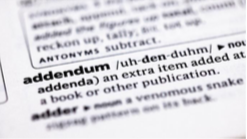Extra: The Secret of Our RFP Success
Ever wonder how we win new business and contracts through competitive bidding?
If you want a peek behind the scenes, the secret is in the Request for Proposal (RFP) process! An organization (“the Buyer”) may post its RFP documents on a website (such as MERX, Biddingo, etc.) or invite preferred companies to bid.

Interested parties (“Proponents”) respond with a business proposal. The RFP texts specify the proposal contents, format, due date, scope of work, legal terms, conditions, contract duration and all other requirements.
Some RFPs are very precise, while others are quite vague or contradictory. Some are short, while others are hundreds of pages long. The secret is to read the RFP text very carefully, many times, to find out exactly what is required. Even the best business proposal in the world will be rejected outright if it is submitted just one minute past the deadline, submitted in the wrong format, or – alas – delivered to the wrong address. Just one deficiency or minor missing detail may result in disqualification or a much lower score.
Next, we ask ourselves, is this work for us? Do we want to do it? If the answer is YES, a team is formed and work on our responsive business proposal begins. The deadlines are usually extremely tight, so the scope of work (as we understand it) is quickly divided into tasks and assigned to team members.
If directives or explanations in the RFP text are not clear, our designated team leader directs questions to the Buyer’s contact person designated in the RFP. Often, the question period has a cut-off date, so we must be careful to ask all questions before this deadline.
Answers to questions and other amendments are usually, but not always, provided to all registered Proponents in a document called an addendum. An addendum may significantly (and suddenly) change the original scope of work, so each one must be read very carefully.

After our painstaking teamwork, our final proposal is delivered to the Buyer as instructed for evaluation.
The Buyer’s internal proposal evaluators review all accepted proposals, which means the evaluators may be reading hundreds of pages in a very short period of time. Proposals are scored and ranked according to the Buyer’s stated criteria in the RFP text. A winner is picked and – it’s ASP!
